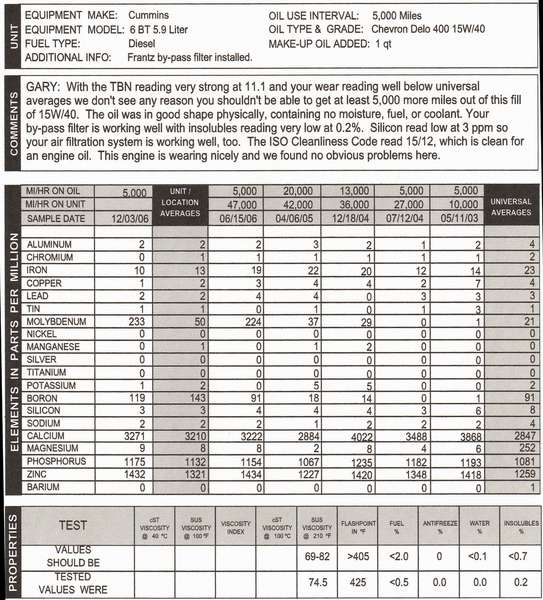I have an Oilguard BP on my wife's 04 Honda CR-V. I had Blackstone do a particle count with the latest UOA (20,000 miles on the M1 0W-20 oil and 60,000 miles on the engine).
Interestingly, the BP element actually is the original when I installed the BP at 11,000 engine miles, so that means the element has almost 50,000 miles on it. I didn't change it because it always warmed up quickly. My thinking was that it would filter better overtime as long as there was still flow. I did change the oversized PP filter at 10,000 mi intervals.
I'll post the UOA in the appropriate section but need help interpreting the results of the particle count. Blackstone’s comment was that “18/14: is good for a motor oil”, but I’m wondering it 18/14 is good for motor oil with a BP?
ISO Code (2): 18/14
NAS 1638 Class: 3
ISO Code (3): 18/17/15
>=2 Microns: 3535
>=5 Microns: 1309
>=10 Microns: 362
>=15 Microns: 140
>=25 Microns: 33
>=50 Microns: 3
>=100 Microns: 0
Interestingly, the BP element actually is the original when I installed the BP at 11,000 engine miles, so that means the element has almost 50,000 miles on it. I didn't change it because it always warmed up quickly. My thinking was that it would filter better overtime as long as there was still flow. I did change the oversized PP filter at 10,000 mi intervals.
I'll post the UOA in the appropriate section but need help interpreting the results of the particle count. Blackstone’s comment was that “18/14: is good for a motor oil”, but I’m wondering it 18/14 is good for motor oil with a BP?
ISO Code (2): 18/14
NAS 1638 Class: 3
ISO Code (3): 18/17/15
>=2 Microns: 3535
>=5 Microns: 1309
>=10 Microns: 362
>=15 Microns: 140
>=25 Microns: 33
>=50 Microns: 3
>=100 Microns: 0




